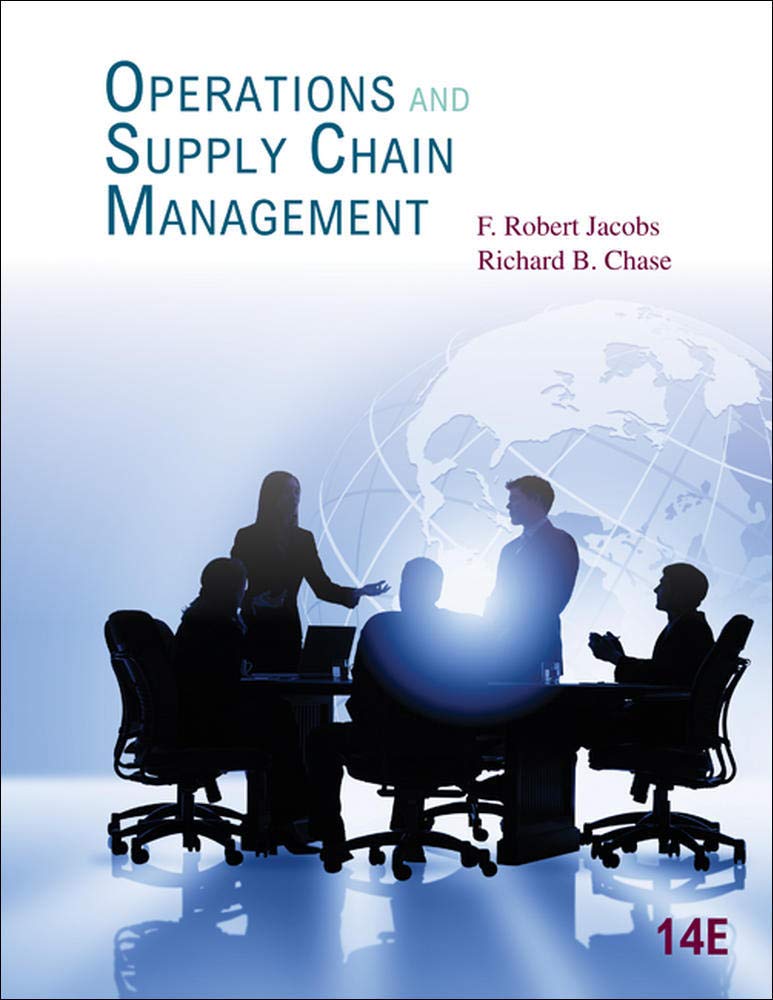Description
Solution Manual of Operations and Supply Chain Management 14 Edition Jacobs
Solution Manual of Operations and Supply Chain Management 14 Edition Jacobs
Chapter 05
Strategic Capacity Management
True / False Questions
|
1. |
Capacity can be defined as the ability to hold, receive, store, or accommodate. |
|
2. |
When evaluating capacity, managers need to consider both resource inputs and product outputs. |
|
3. |
Capacity can be defined as the amount of available resource inputs relative to requirements for output over a particular period of time. |
|
4. |
The capacity utilization rate is found by dividing best operating level by capacity used. |
|
5. |
The objective of strategic capacity planning is to provide an approach for determining the overall capacity level of labor-intensive resources. |
|
6. |
The objective of strategic capacity planning is to determine the overall capacity level of capital intensive resources (including facilities, equipment, and overall labor force size) that best supports the company’s short-range competitive strategy. |
|
7. |
The objective of strategic capacity planning is to determine the overall capacity level of capital intensive resources (including facilities, equipment, and overall labor force size) that best supports the company’s long-range competitive strategy. |
|
8. |
Best operating level is usually a multiple of the level of capacity for which a process was designed. |
|
9. |
Best operating level is the volume of output at which average unit cost is minimized. |
|
10. |
At some point, the size of a growing plant can become too large and diseconomies of scale become a capacity planning problem. |
|
11. |
Long-range capacity planning requires top management participation. |
|
12. |
Overtime and personnel transfers are solutions to capacity problems in the intermediate term. |
|
13. |
Capacity planning is generally viewed in three time durations: immediate, intermediate, and indeterminate. |
|
14. |
The basic notion of economies of scale is that as a plant gets larger and volume increases, the average cost per unit of output drops. |
|
15. |
A piece of equipment with twice the capacity of another piece typically costs twice as much to purchase and to operate. |
|
16. |
The problem of keeping demand sufficiently high to keep a large factory busy is a sales issue and not a diseconomy of scale. |
|
17. |
A production facility works best when it focuses on a fairly limited set of production objectives. |

Reviews
There are no reviews yet.